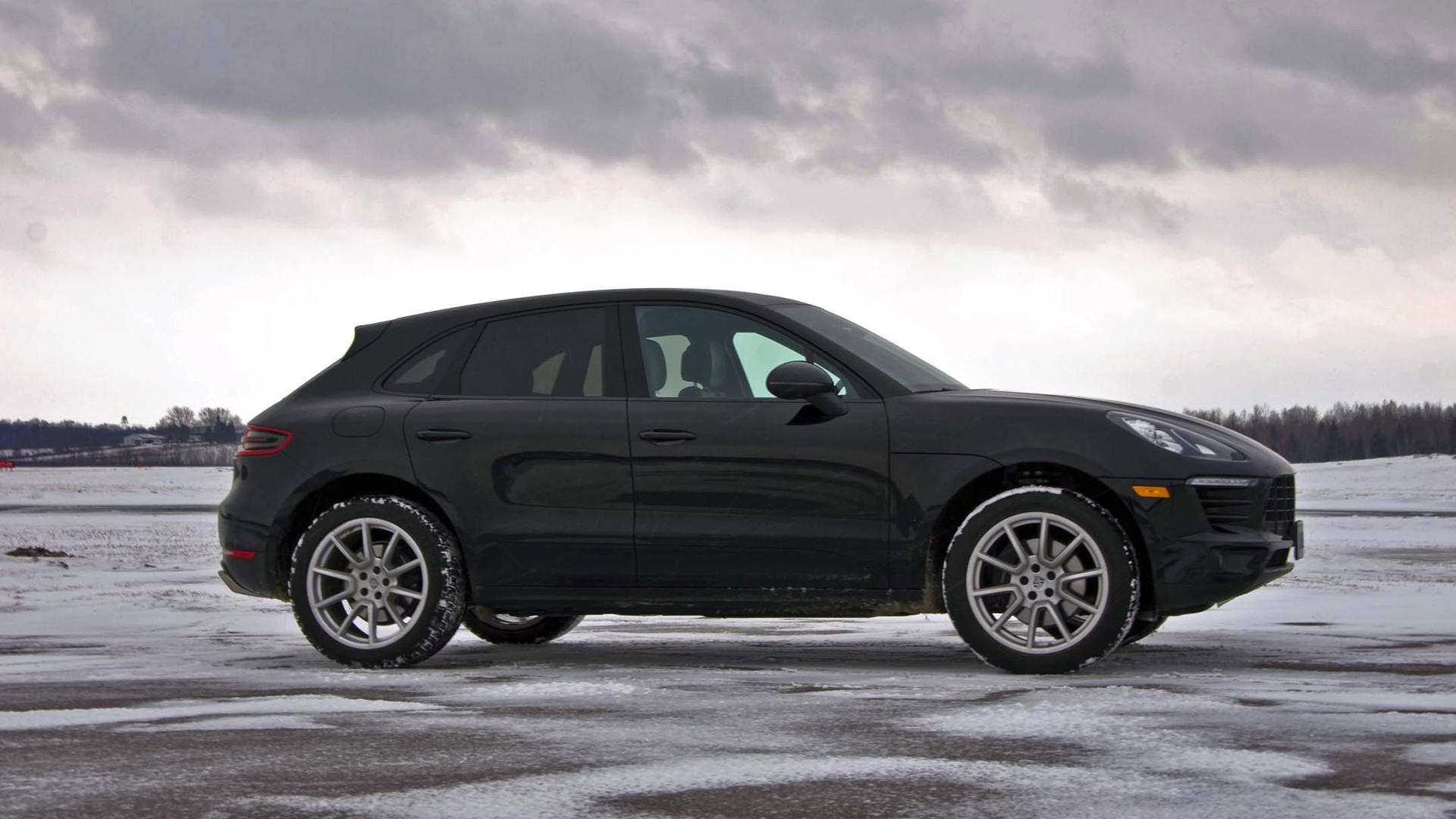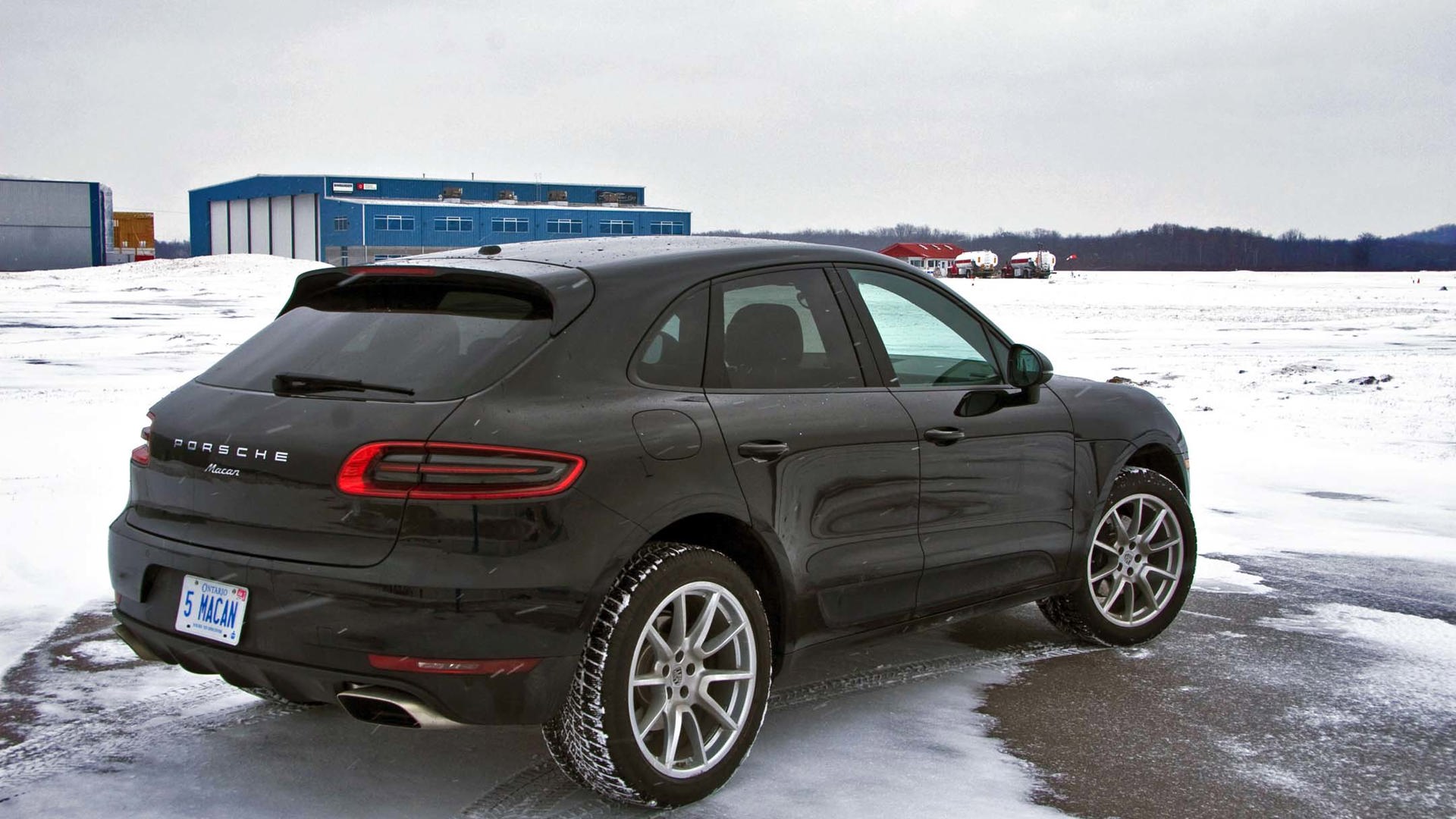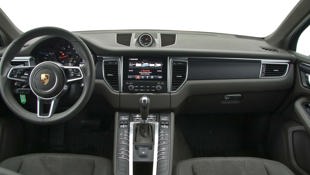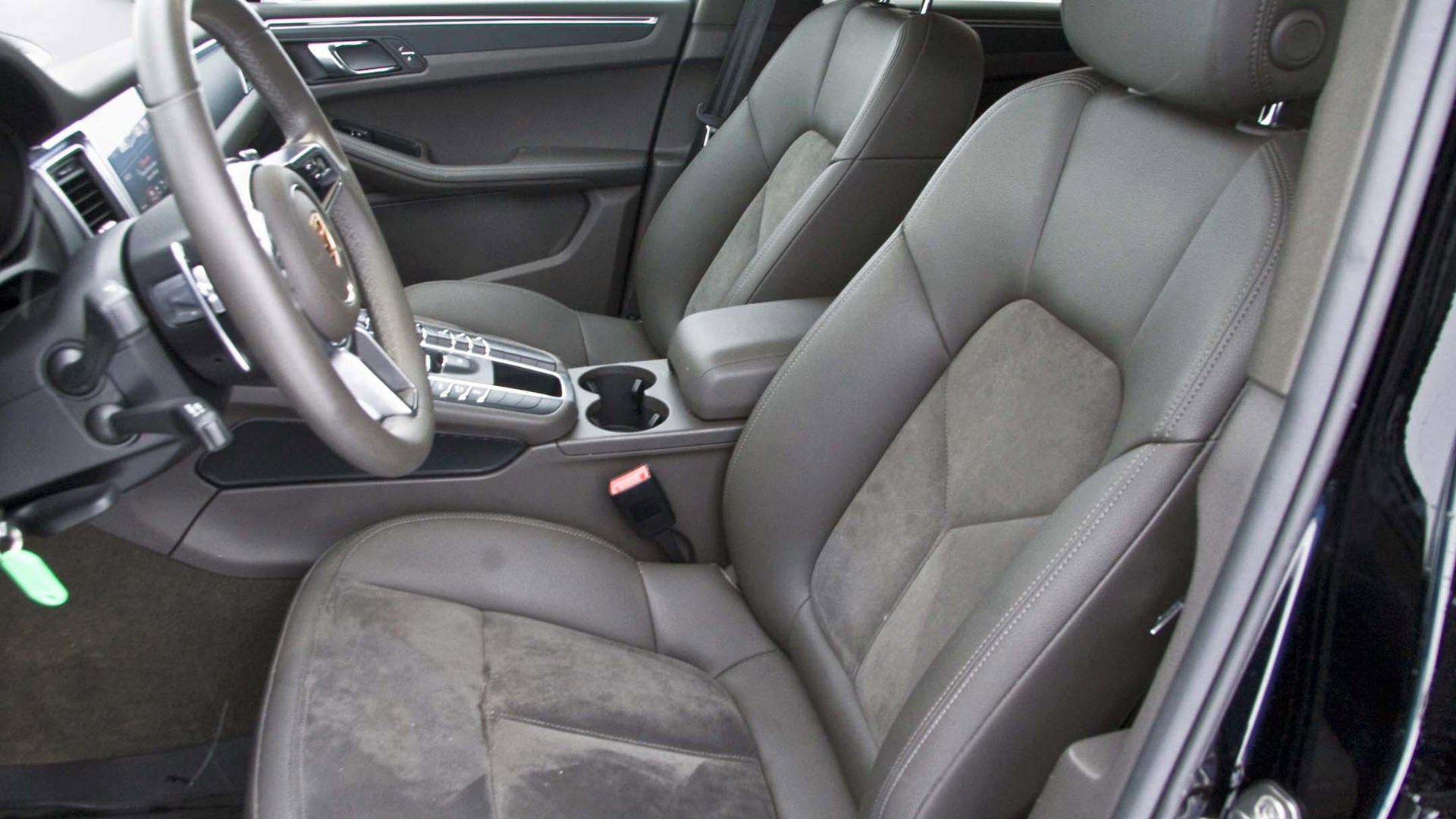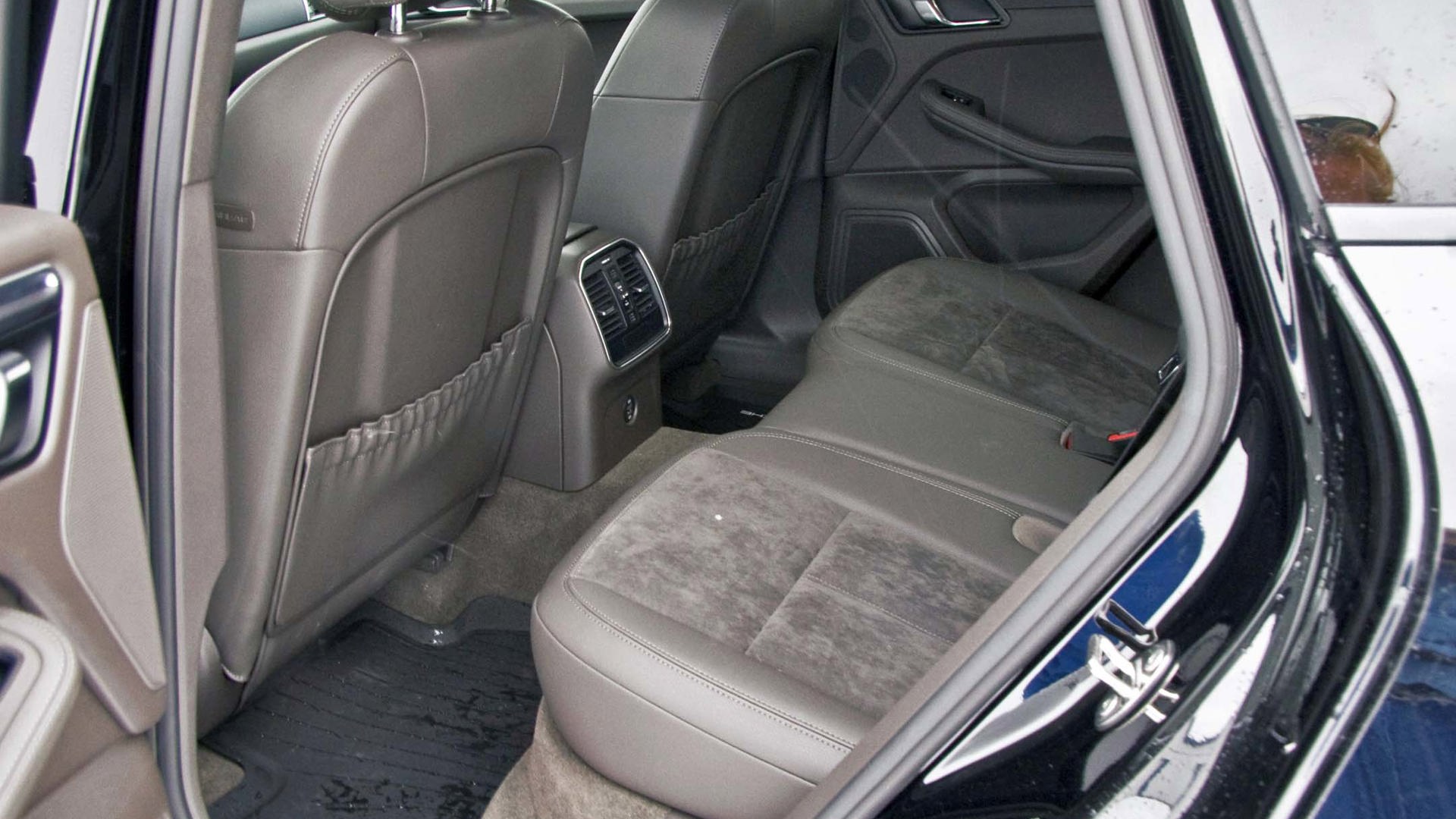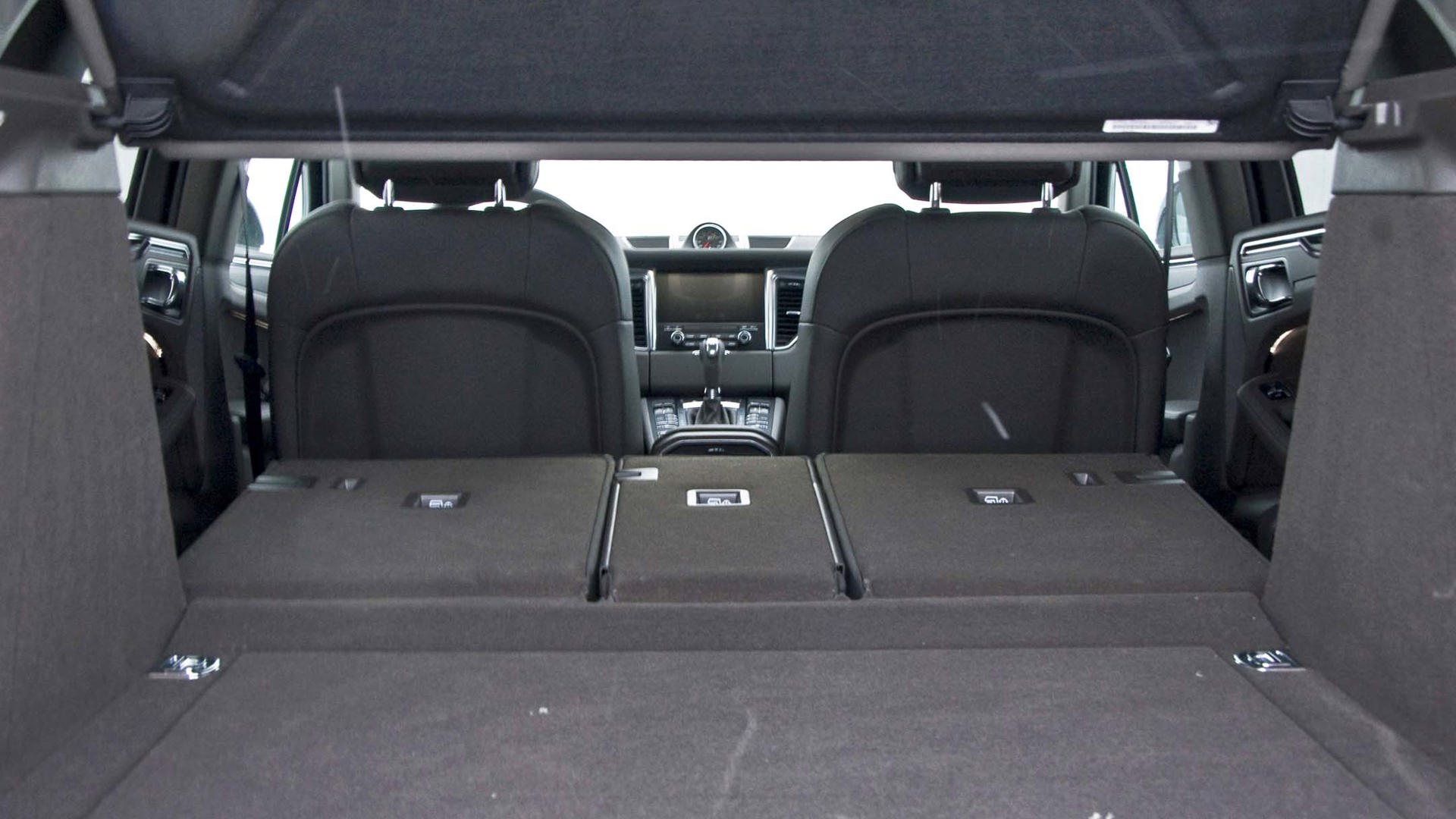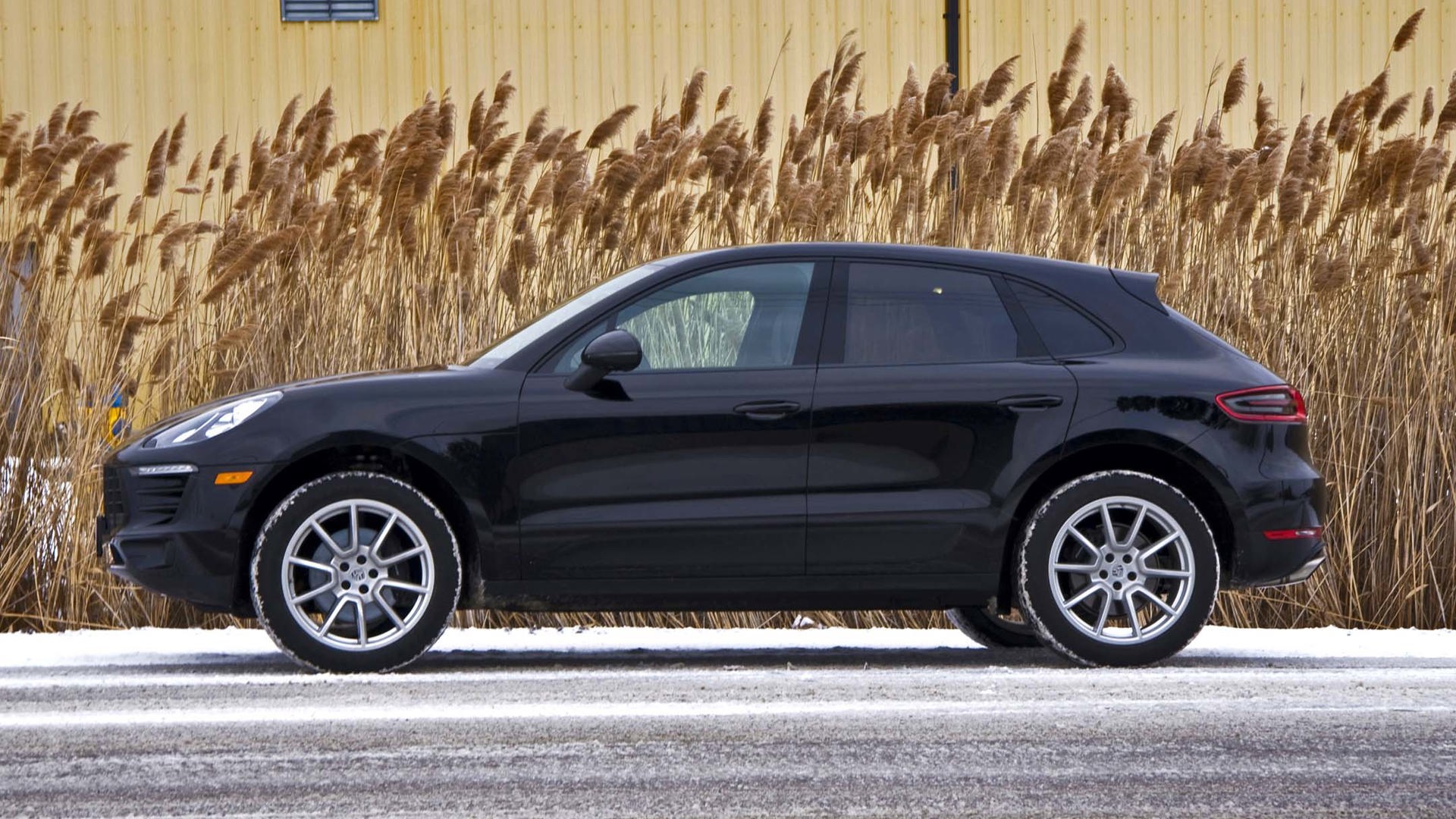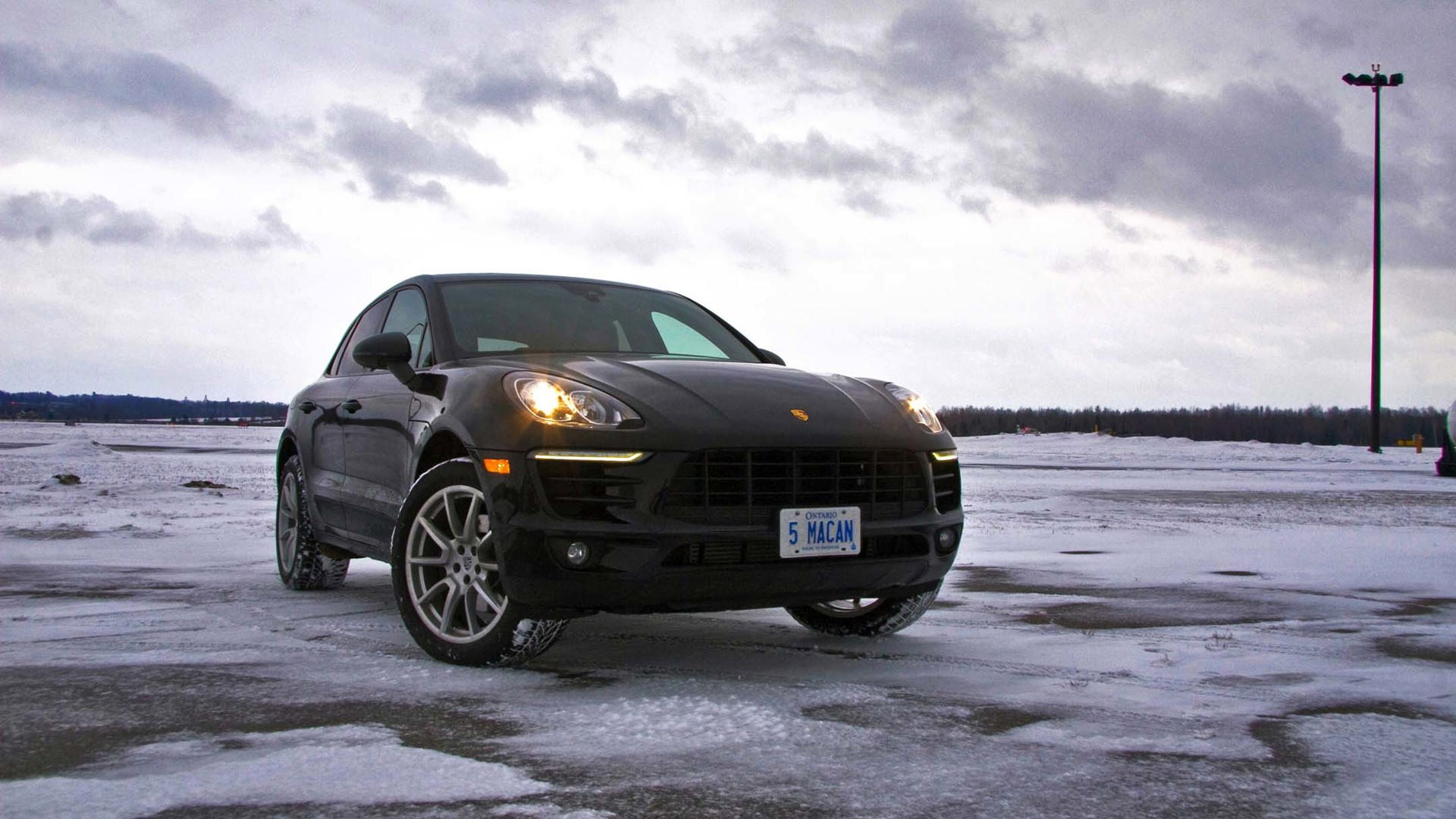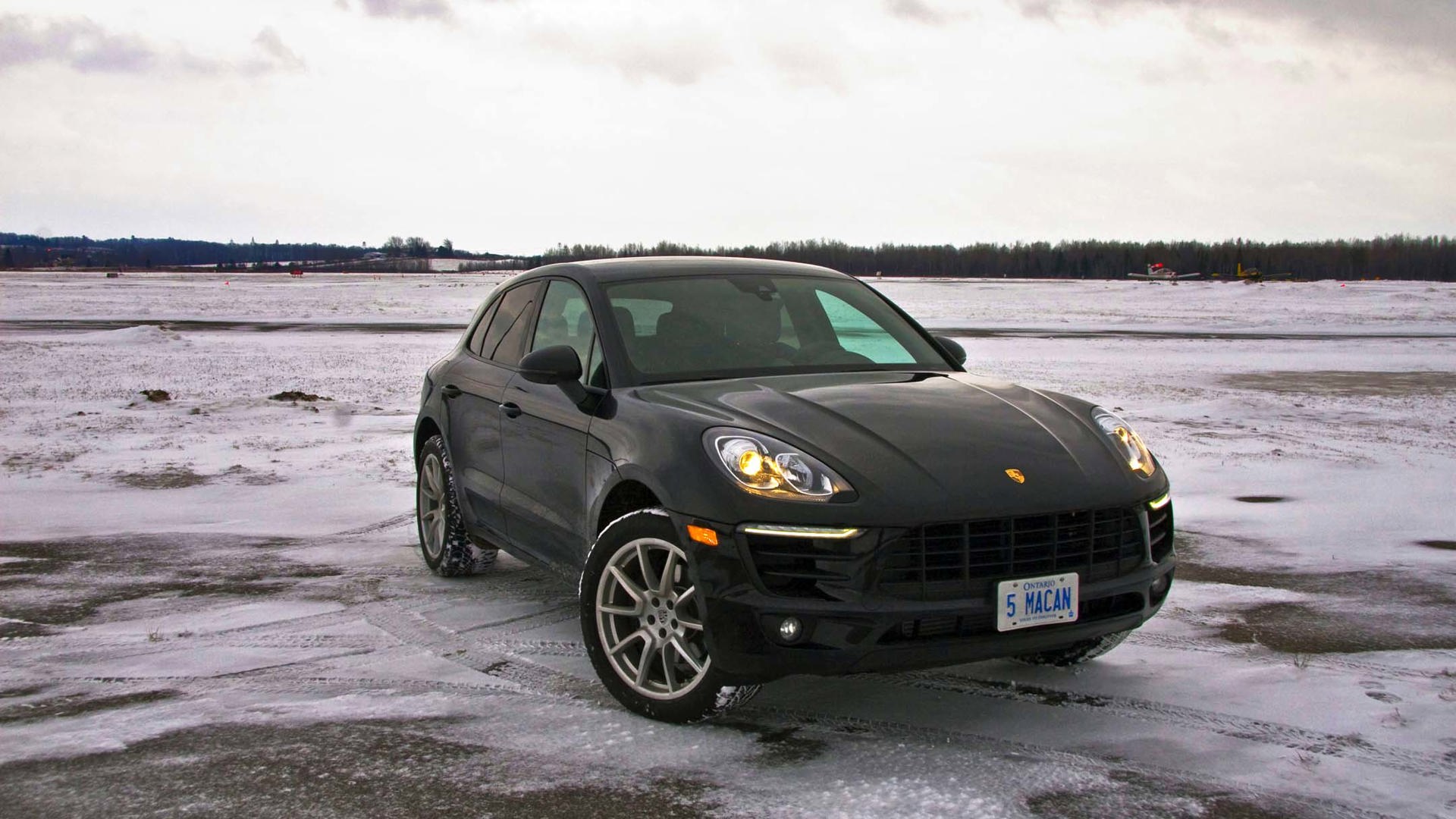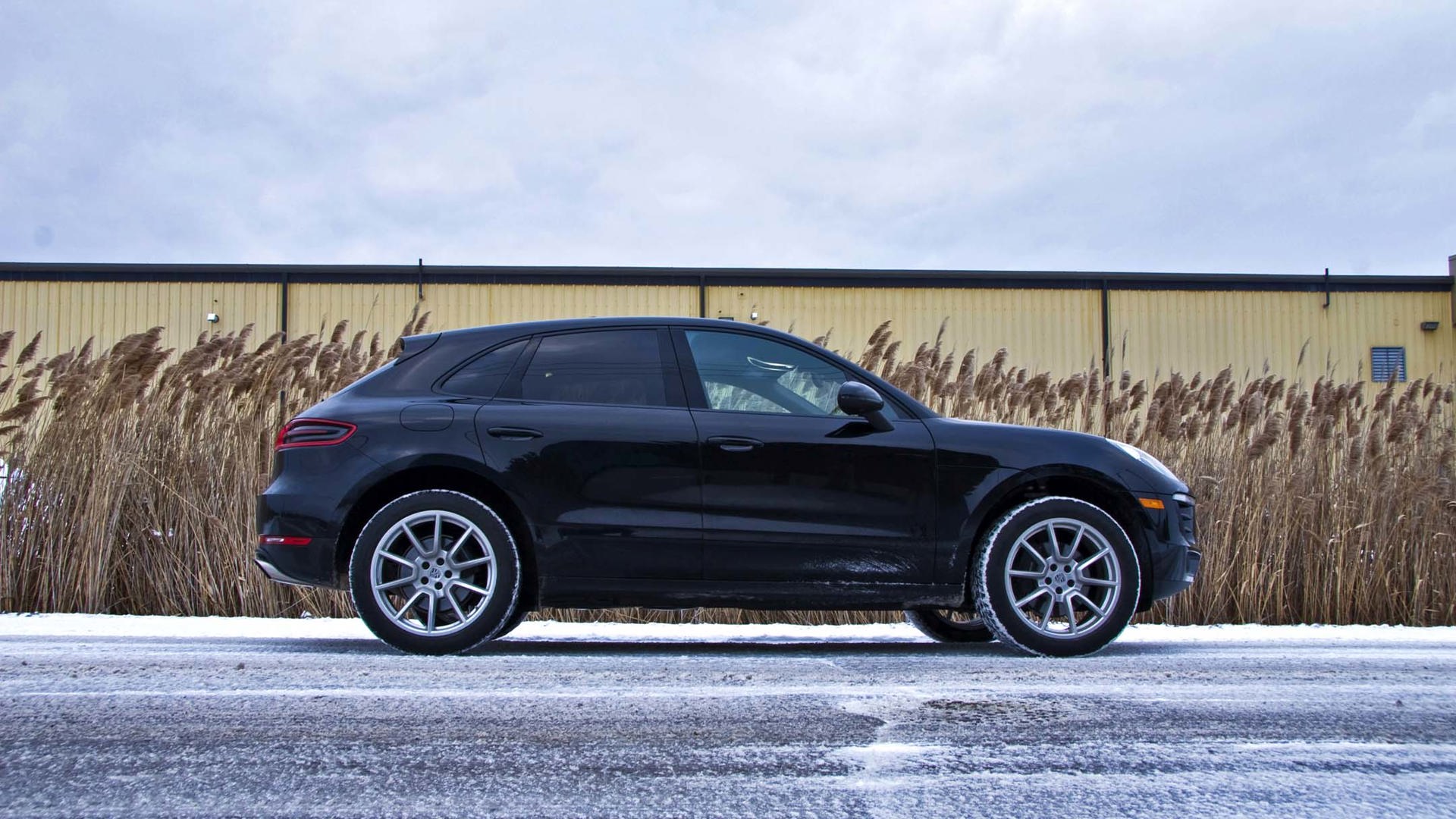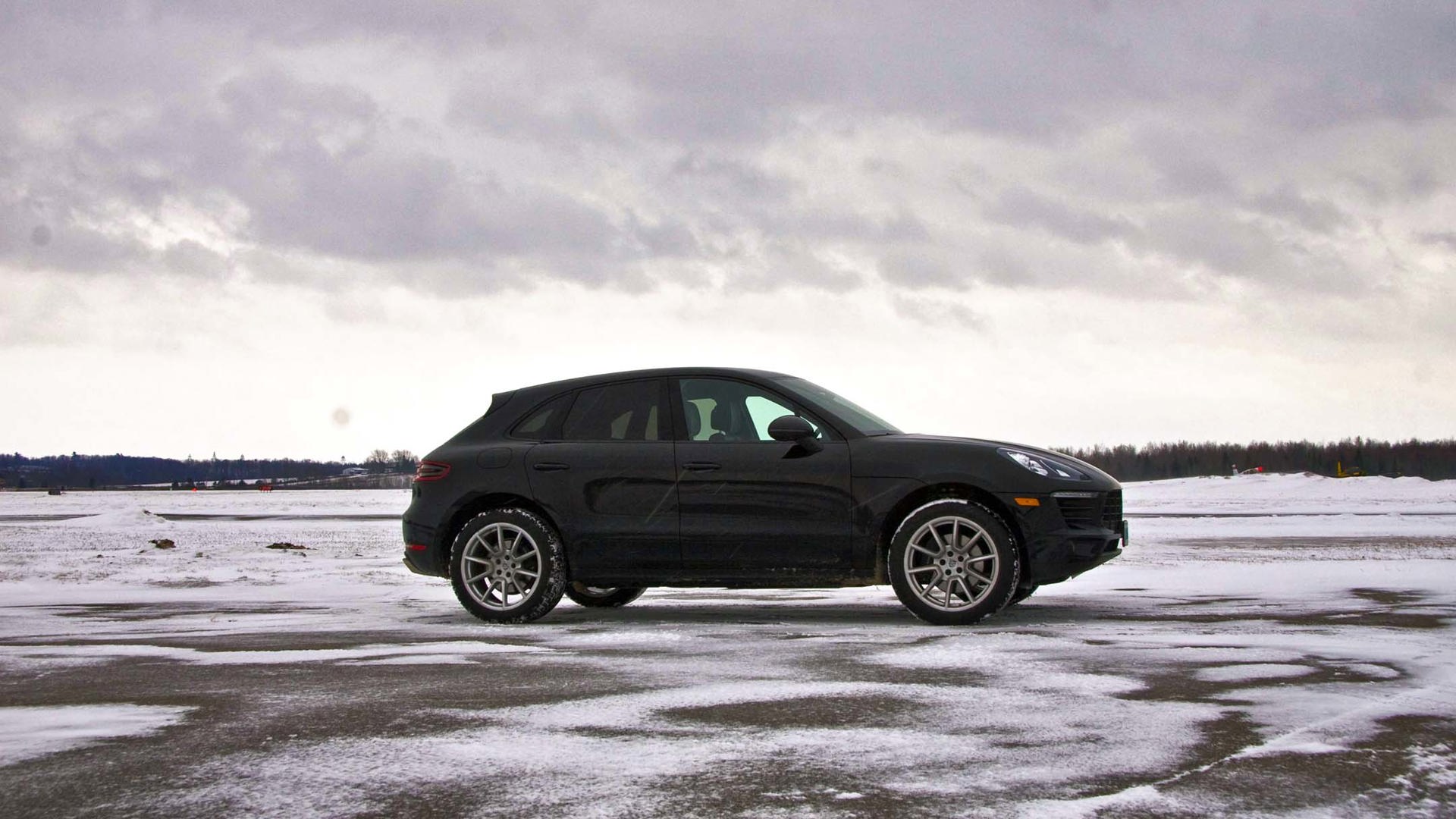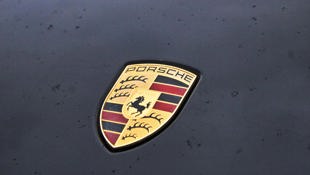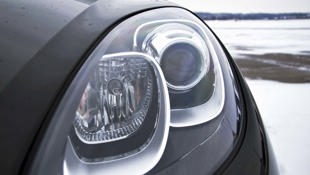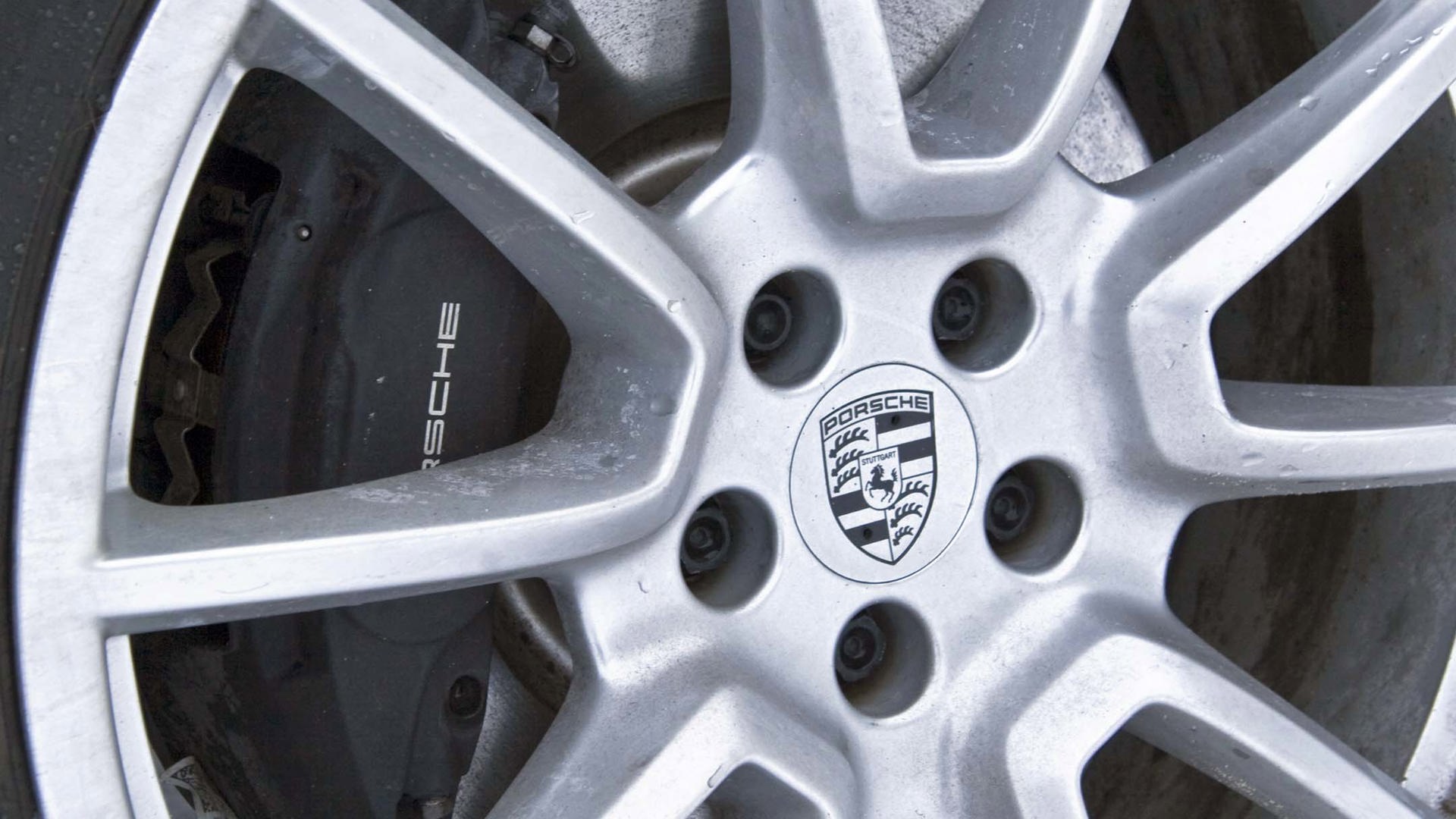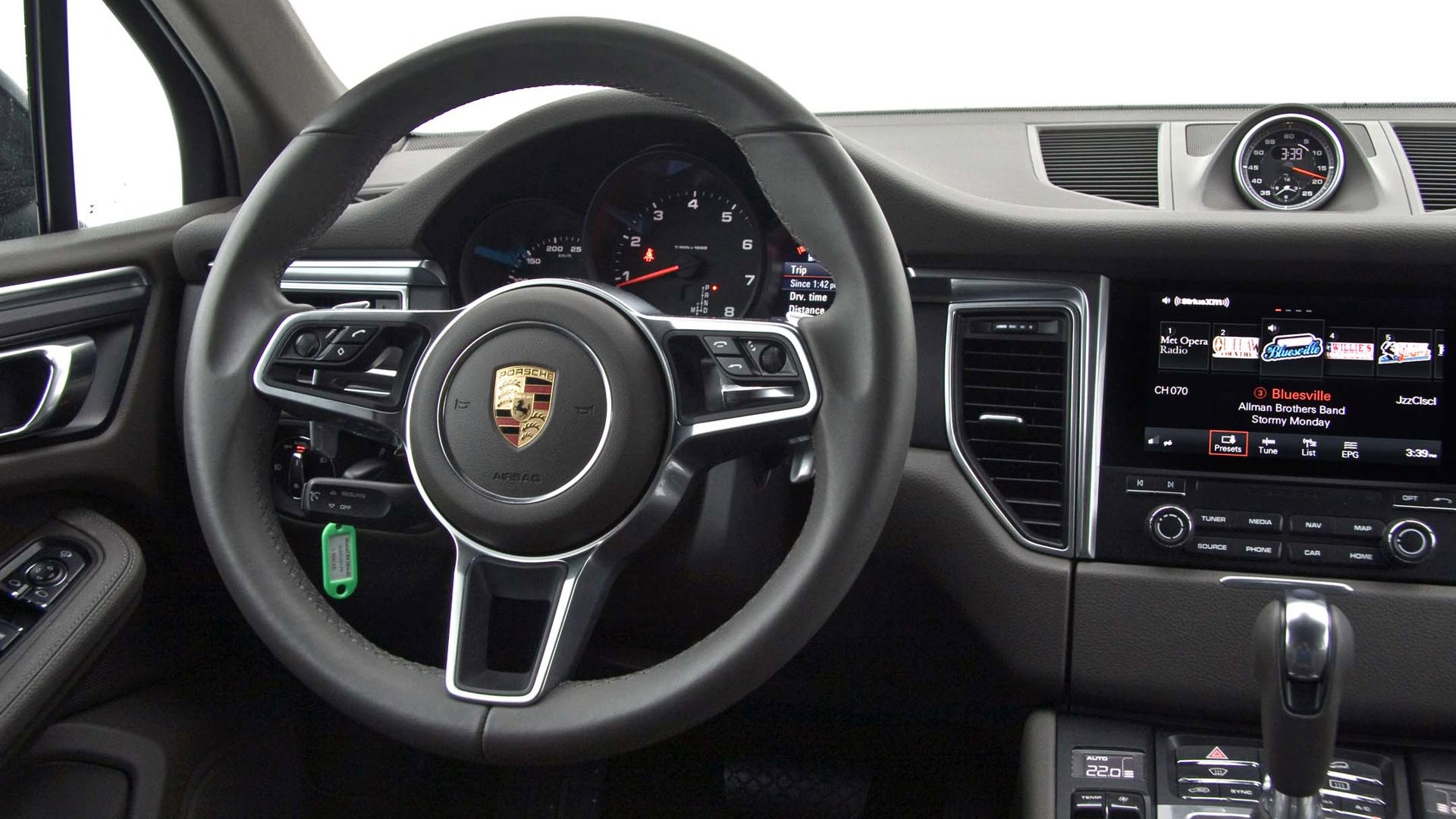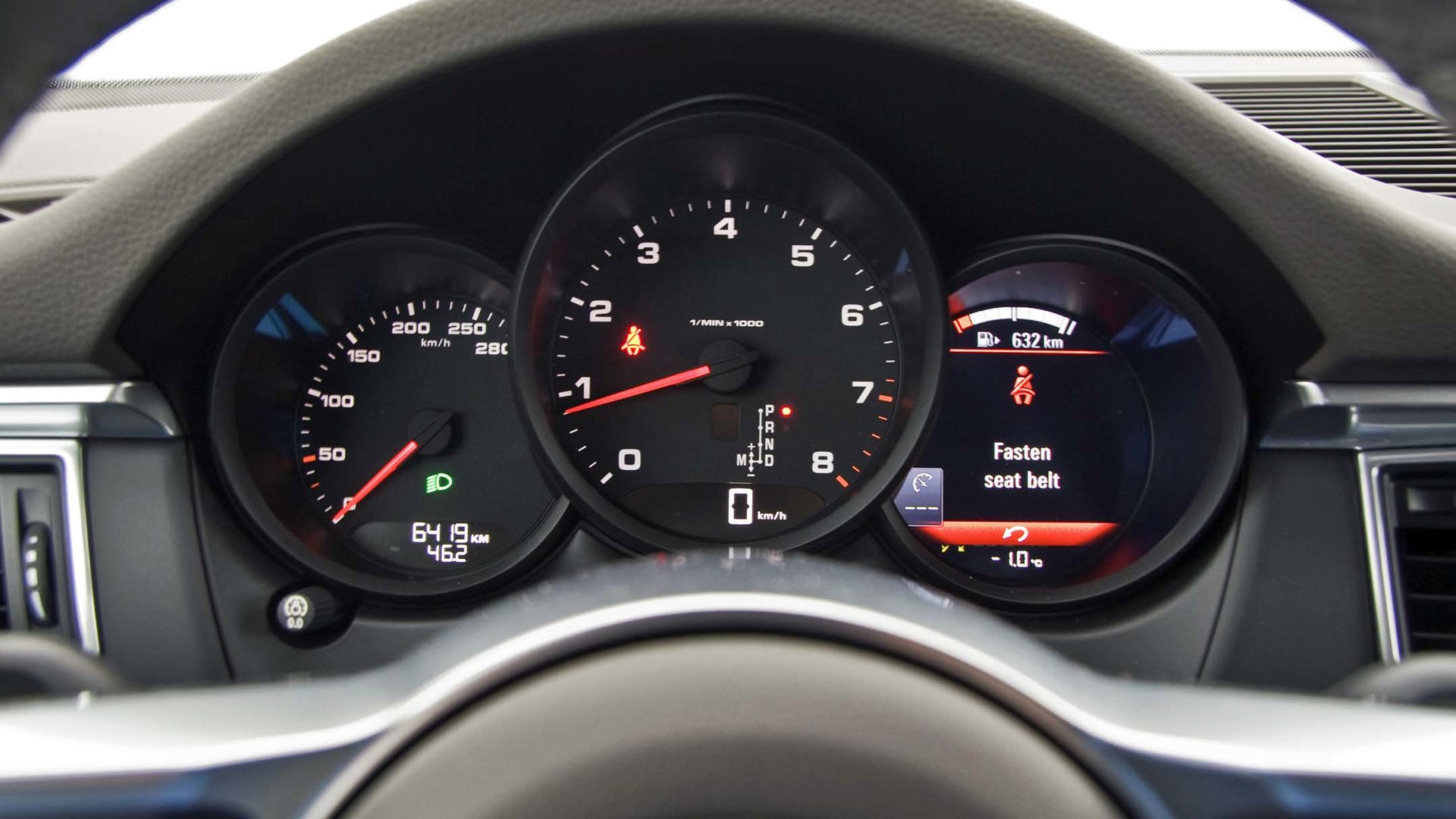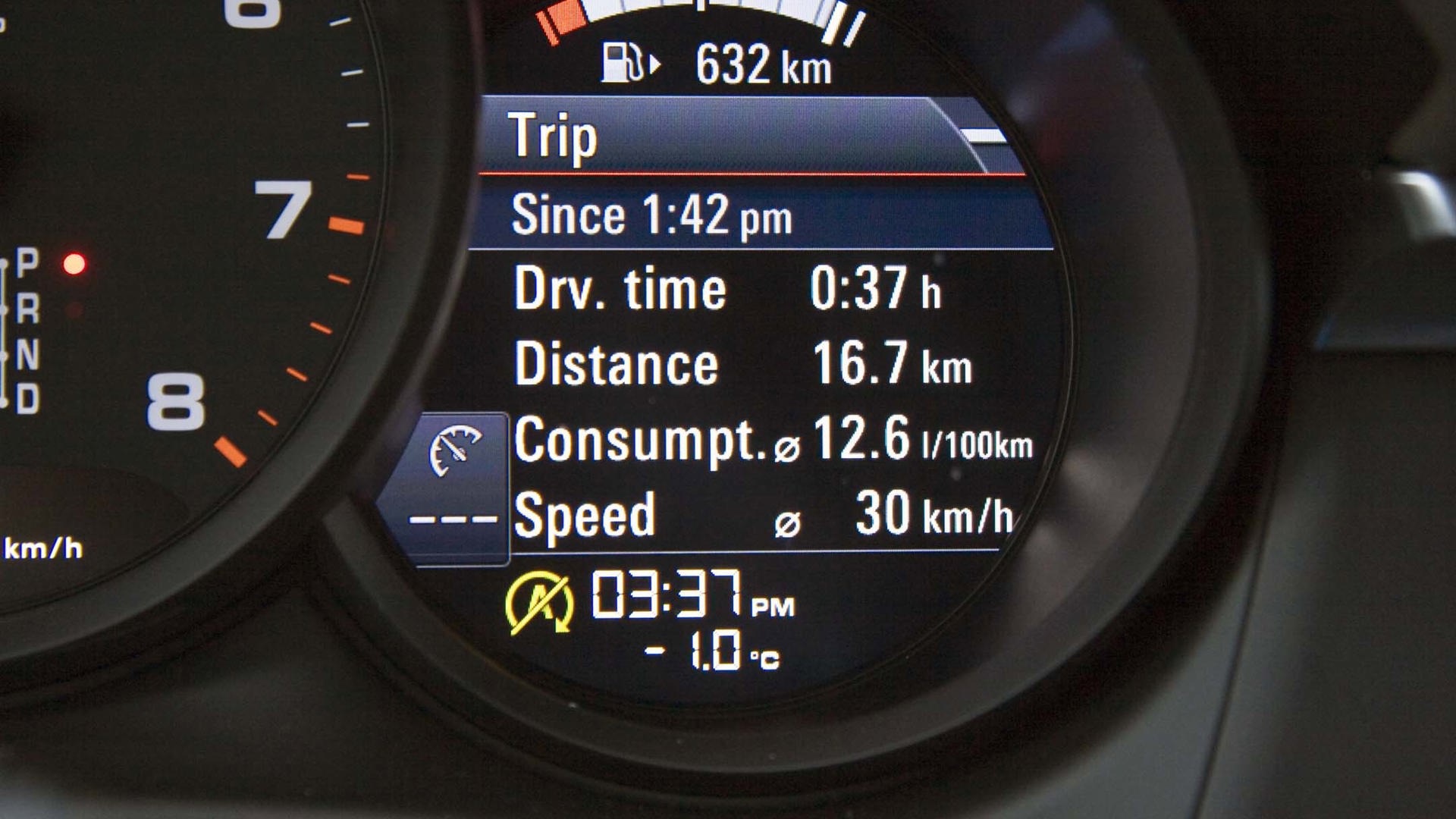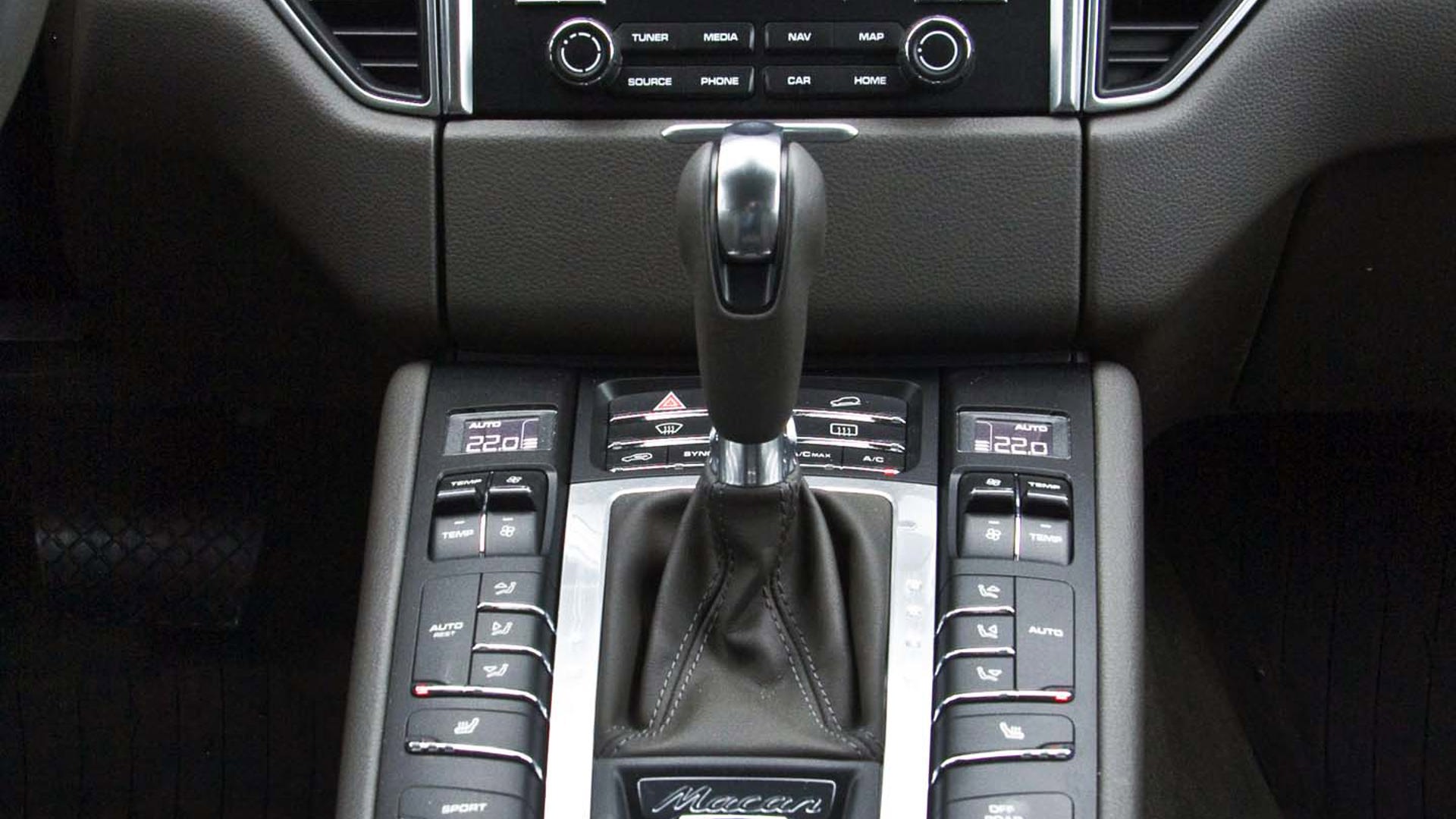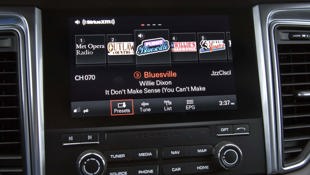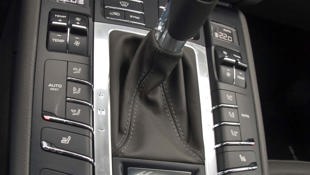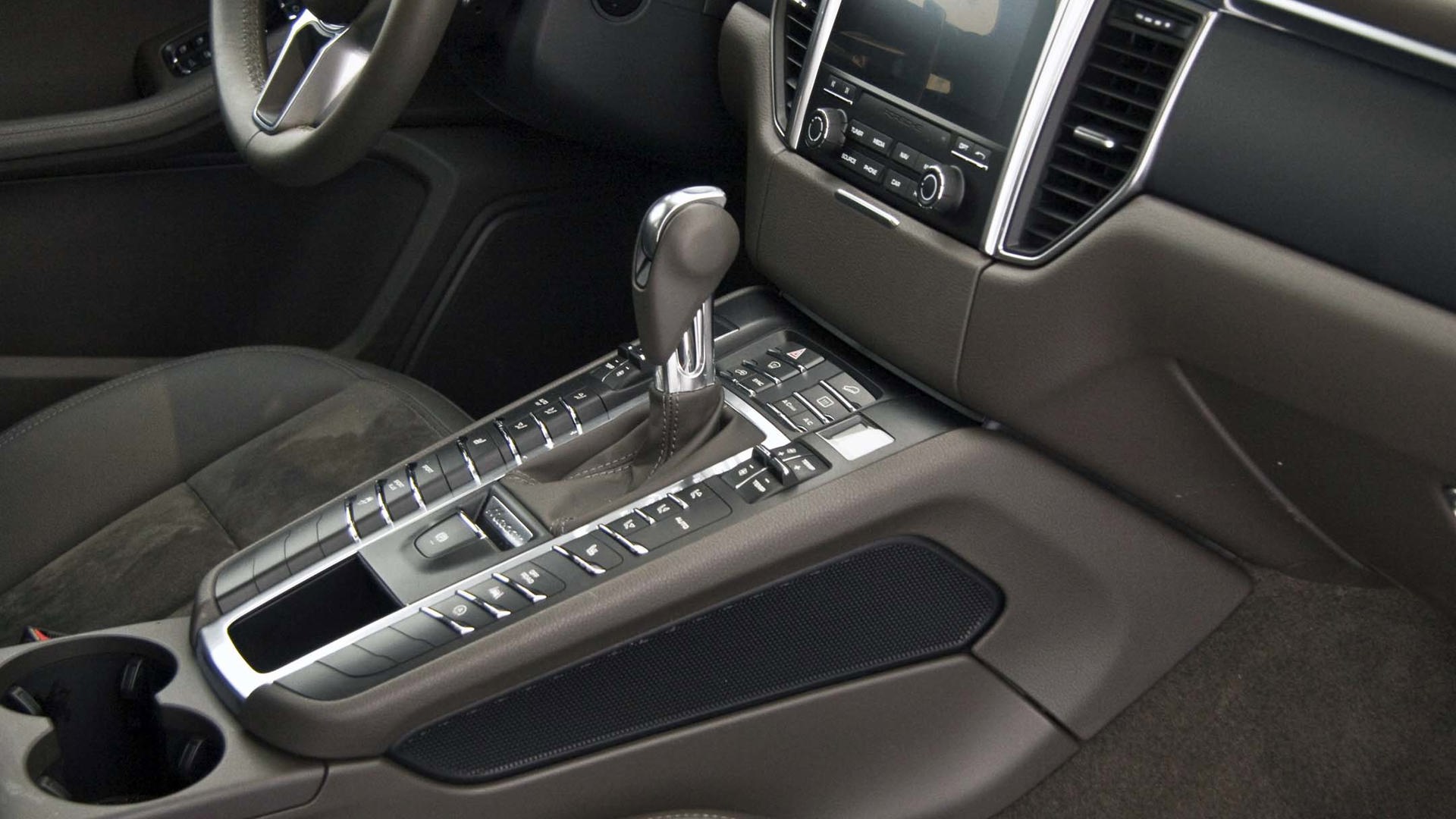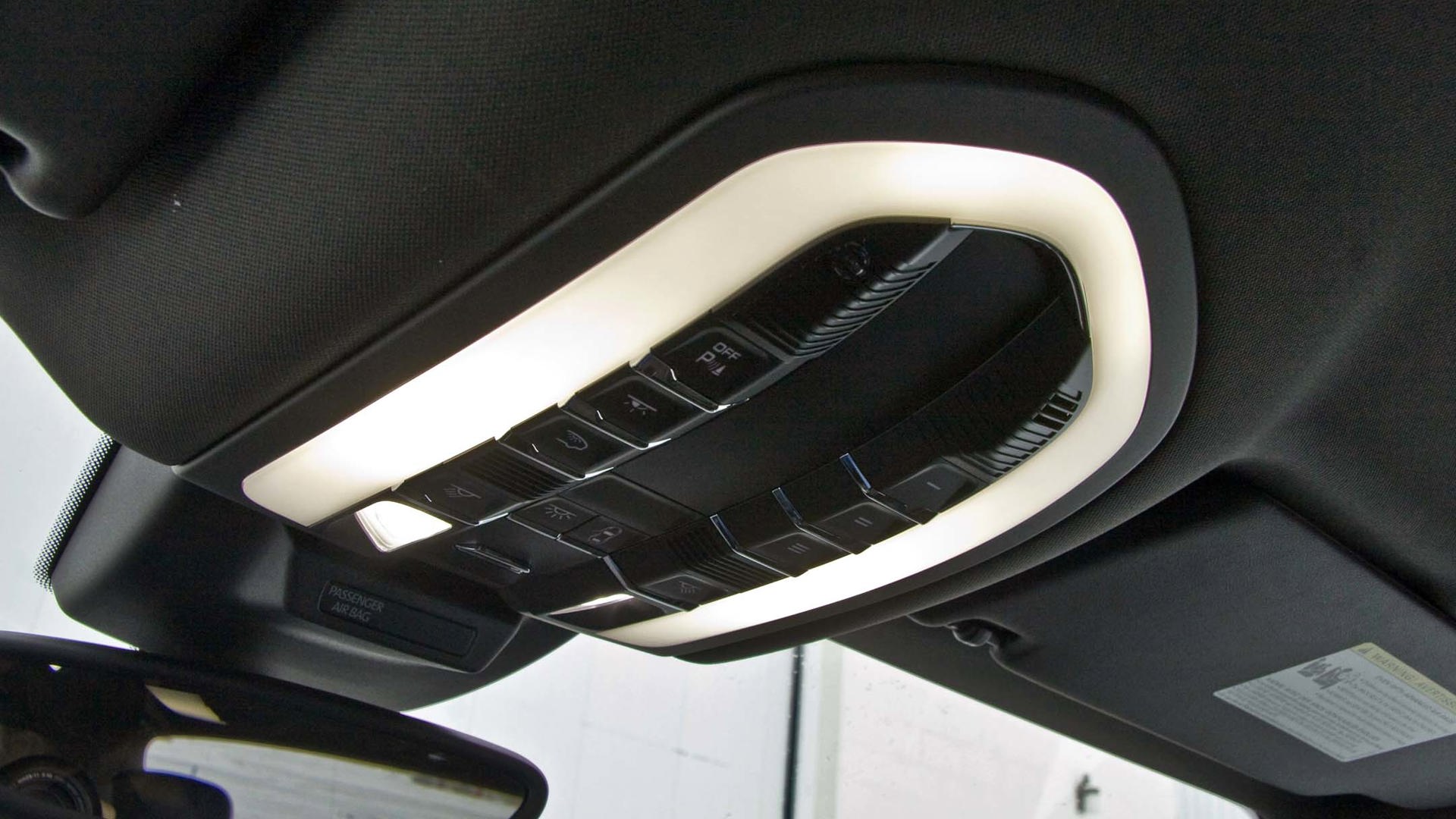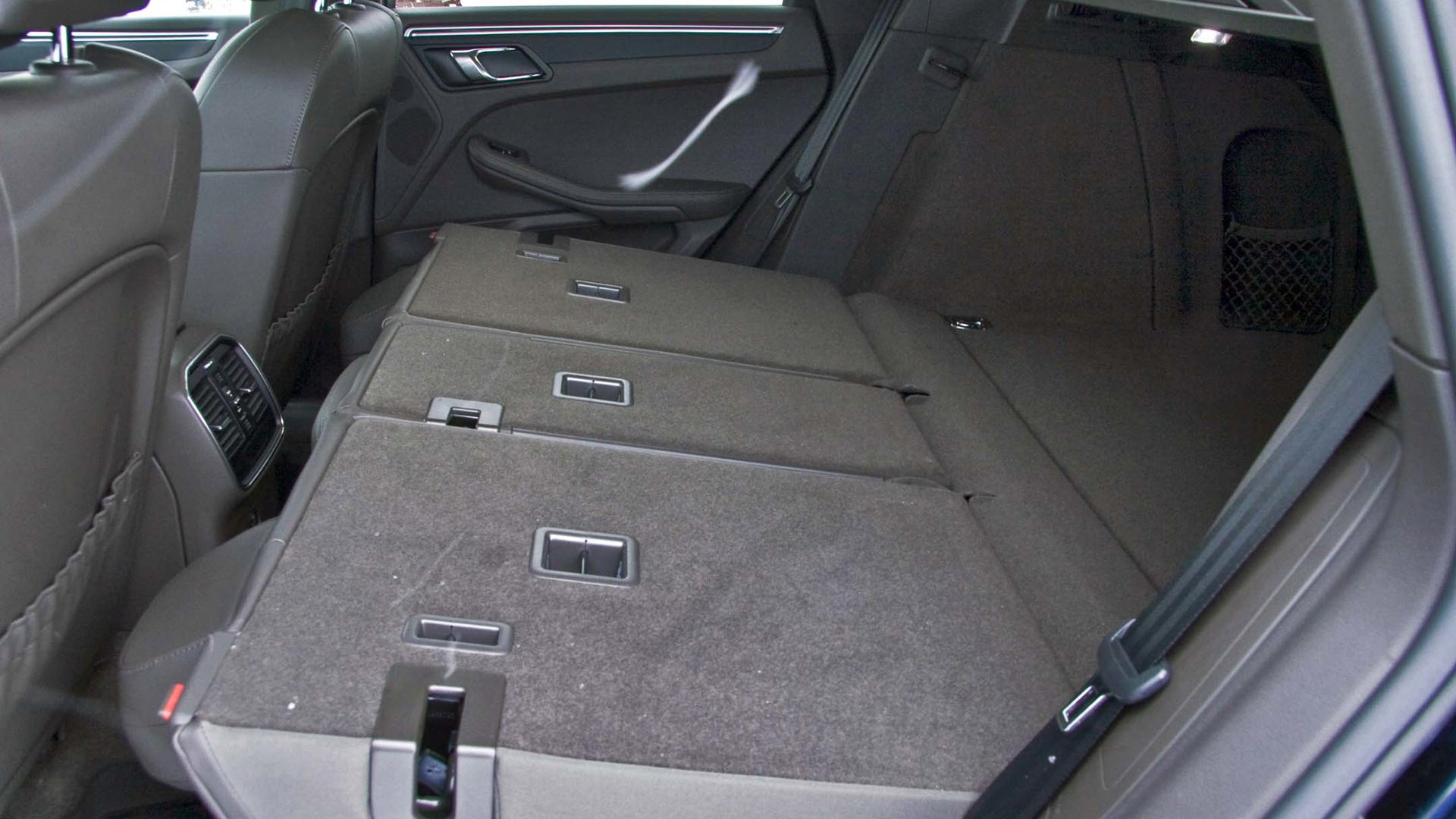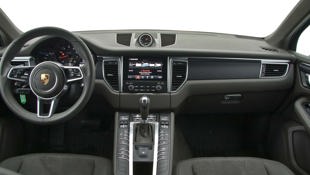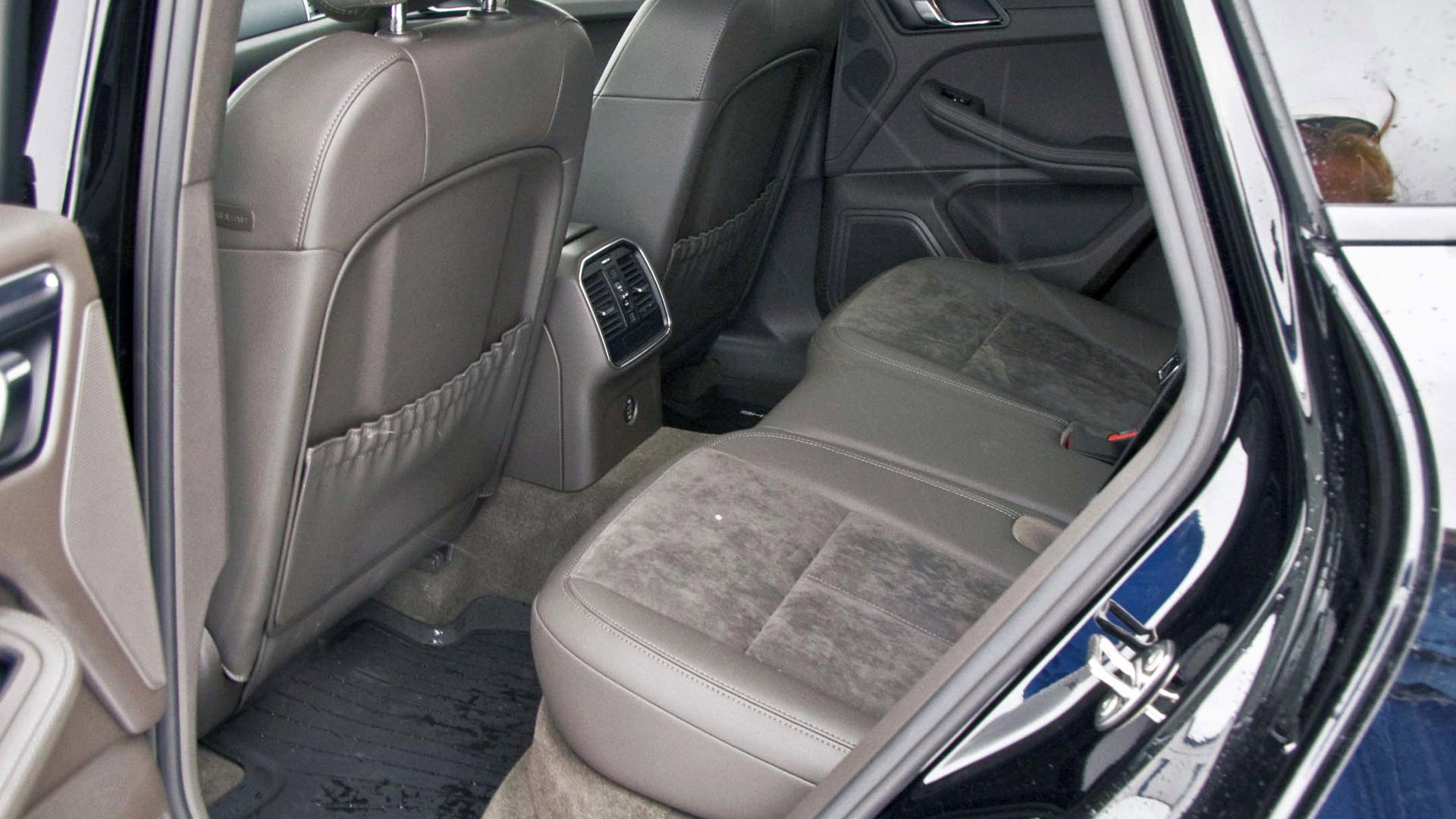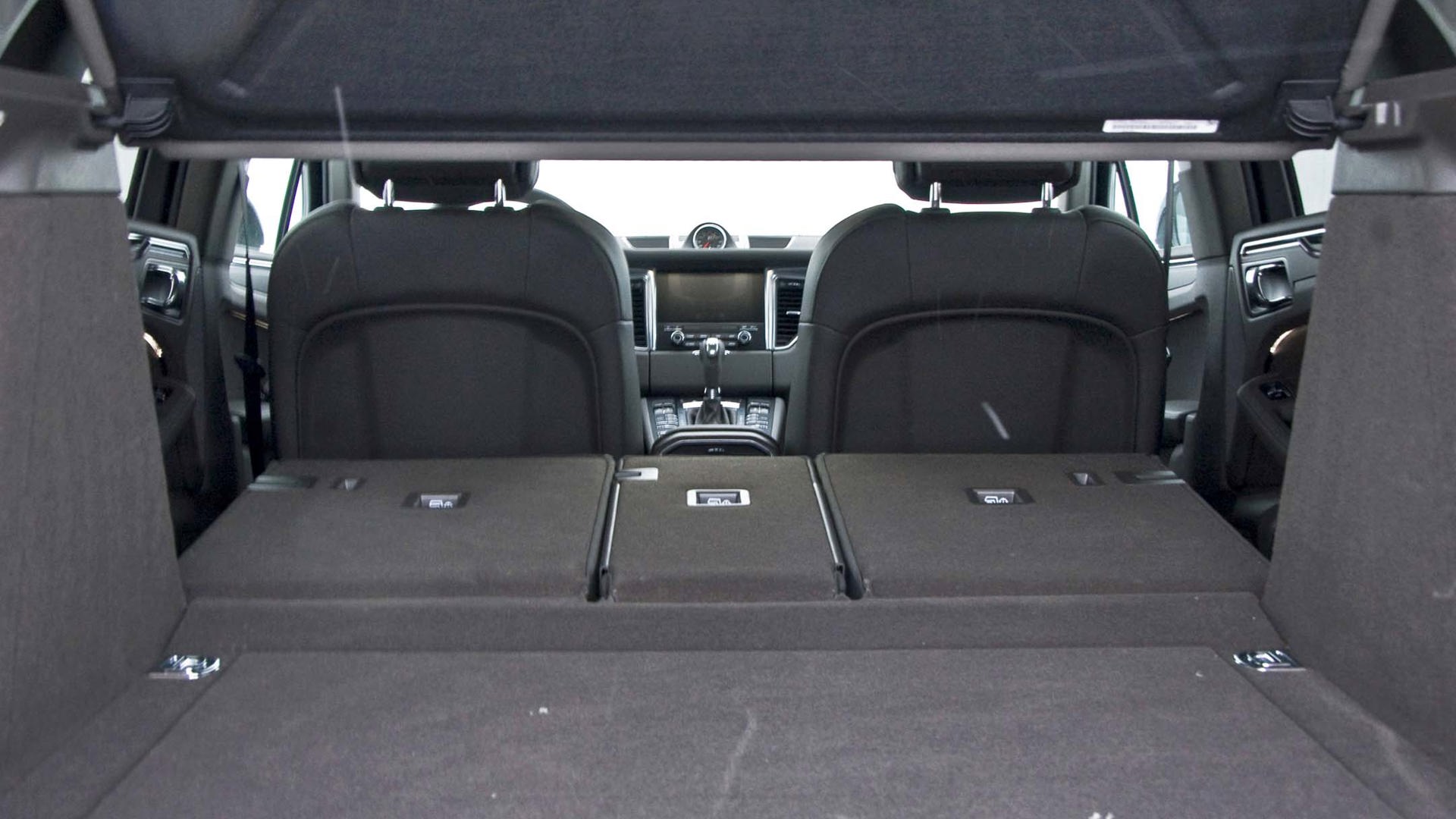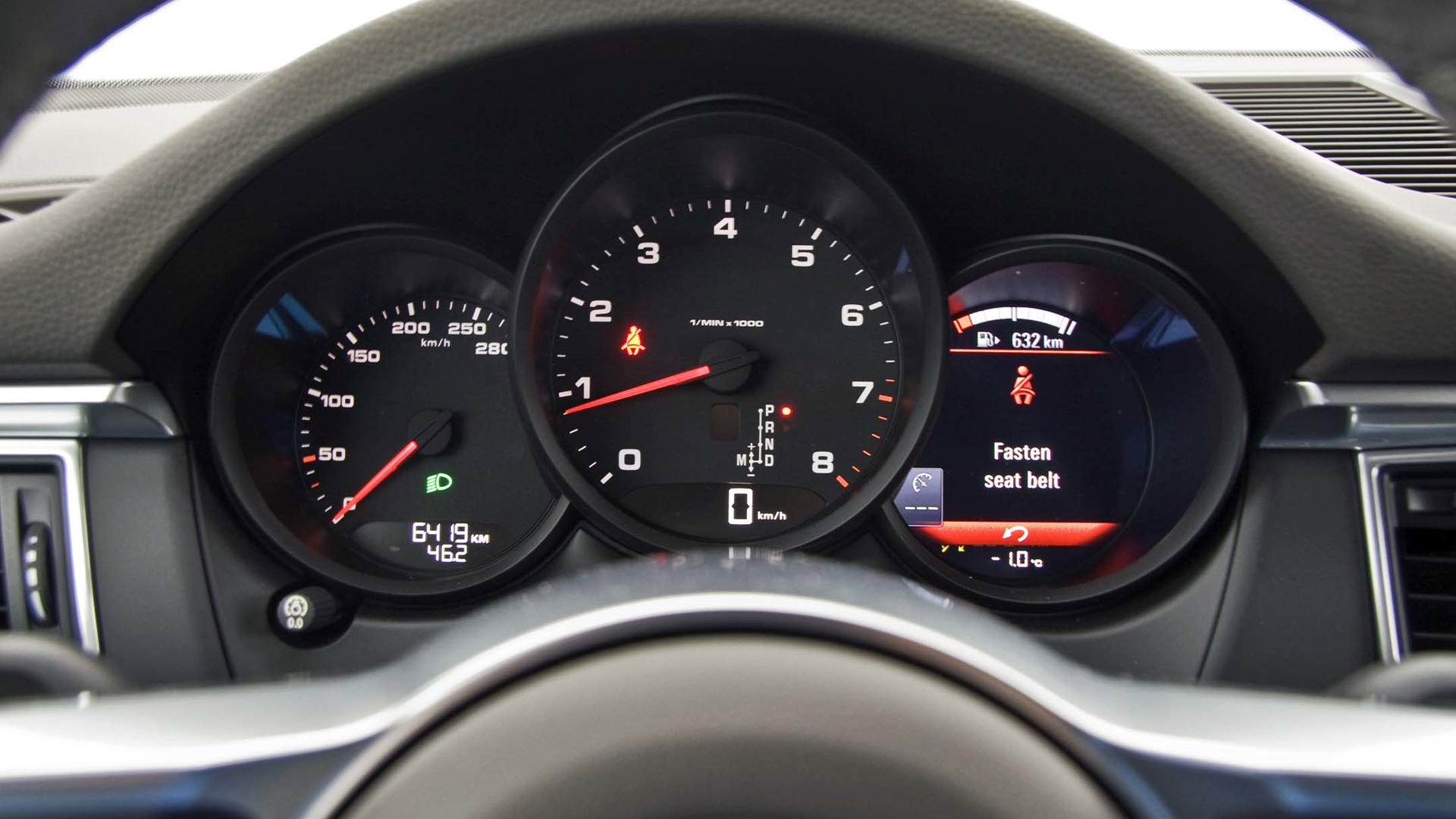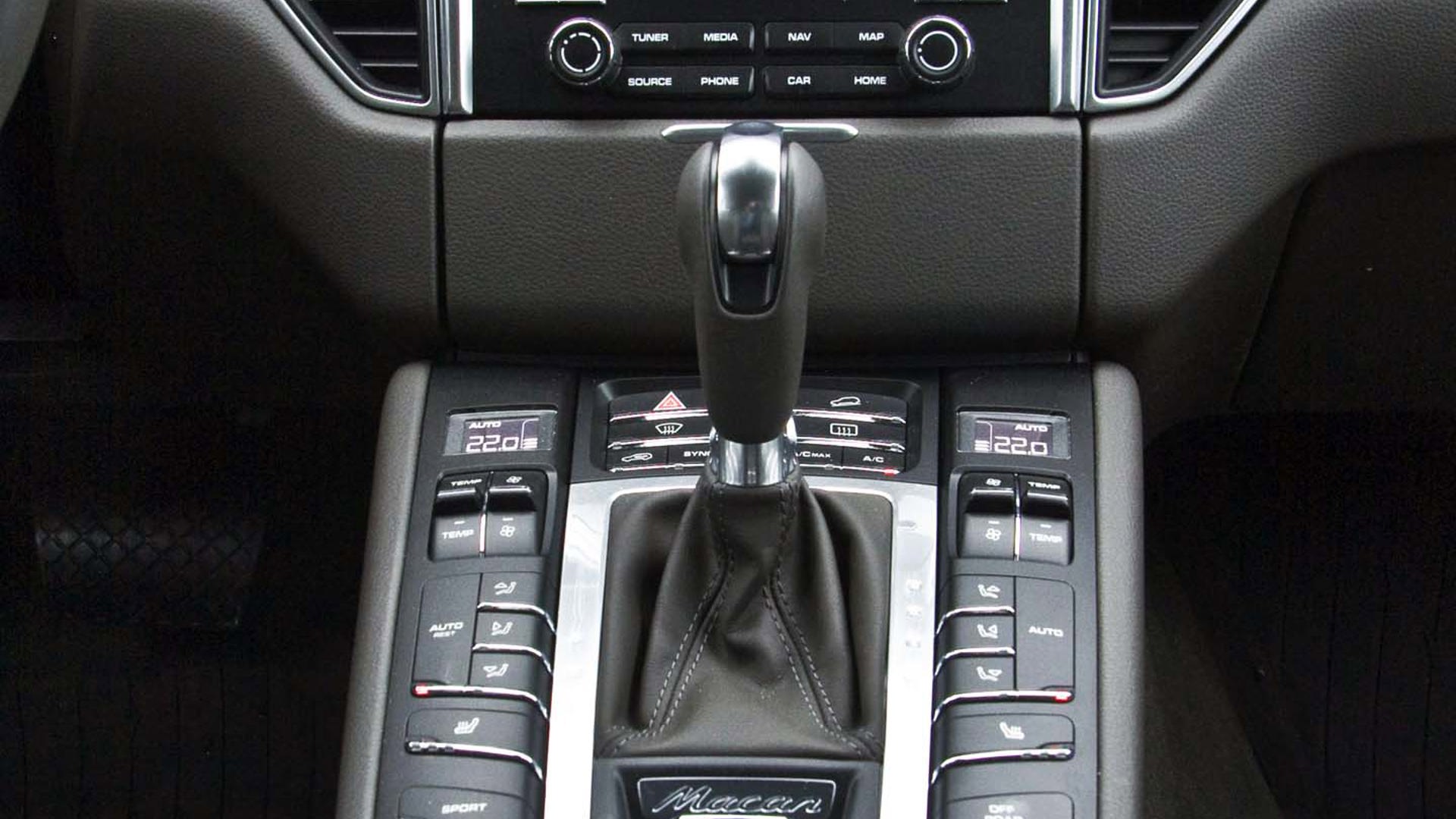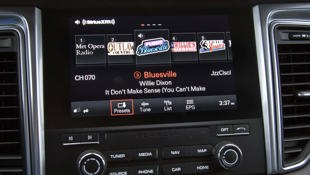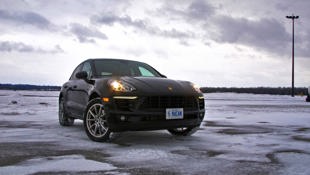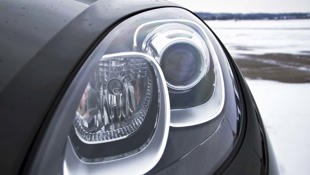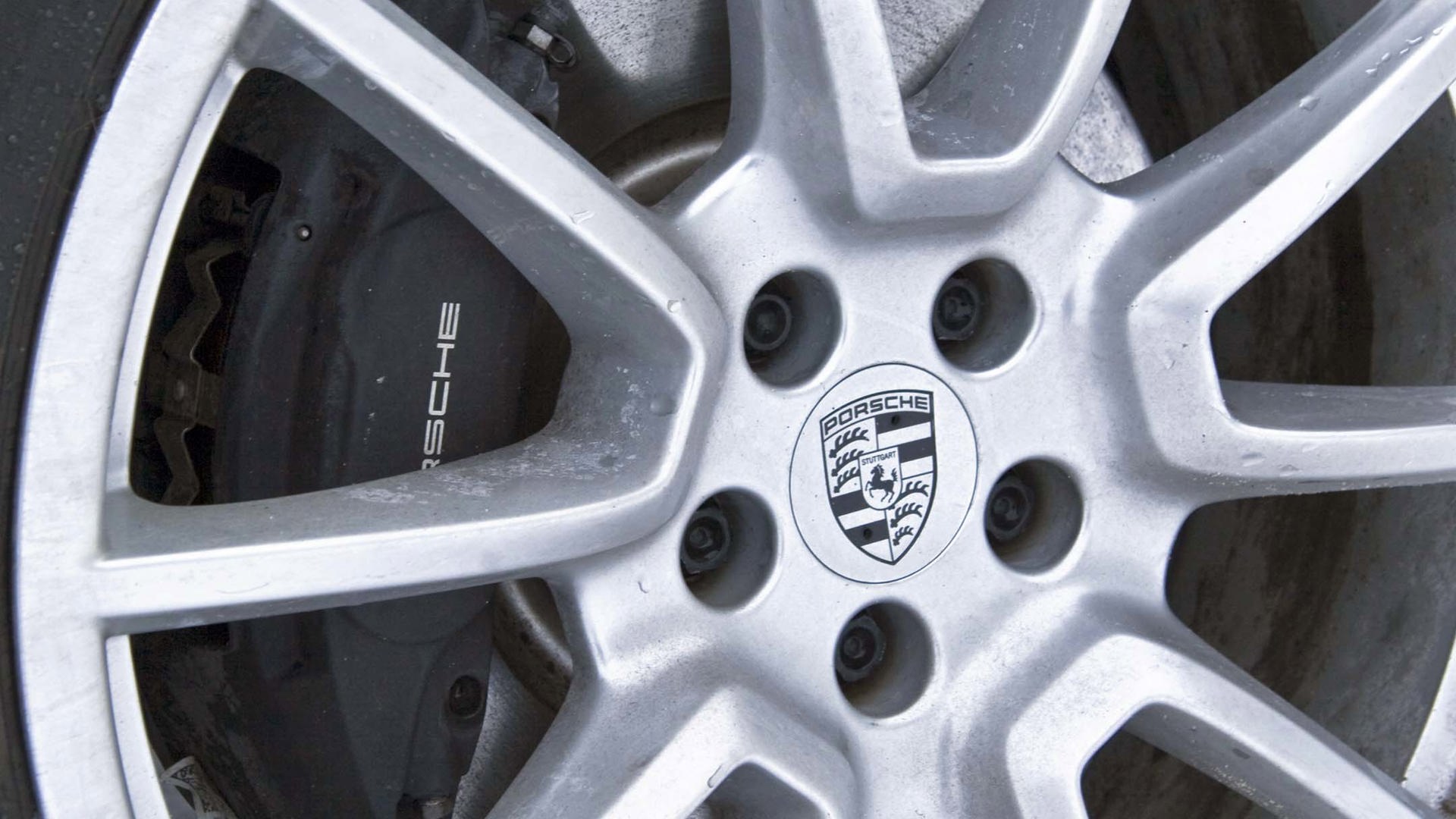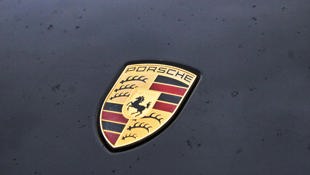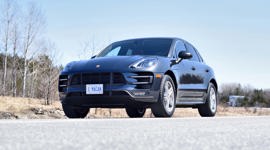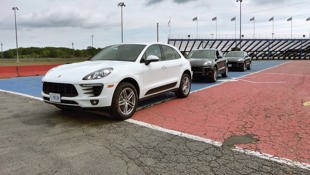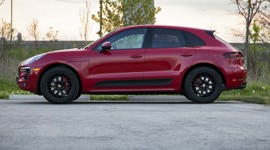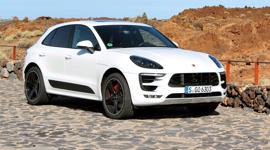 AutoTrader SCORE
AutoTrader SCORE
-
STYLING8/10
-
Safety8/10
-
PRACTICALITY7/10
-
USER-FRIENDLINESS7/10
-
FEATURES7/10
-
POWER8/10
-
COMFORT7/10
-
DRIVING FEEL8/10
-
FUEL ECONOMY8/10
-
VALUE7/10
Oh what a difference a scant fifteen years makes. When Porsche unveiled the Cayenne crossover in 2002, the furor was such that you’d think they’d decided to cancel their sports cars and switch over to minivans.
While it’s obvious that the two are related, the design language looks better on the scaled down Macan than the larger Cayenne.
Most Porsche fans have since grudgingly conceded that though the idea of their beloved marque being associated with mere crossovers is offensive, it’s a necessary evil if the brand is to stay afloat. Even the staunchest Porsche purist has to realize that without the Cayenne, there’d not only be no GT4, it’s quite possible that the niche automaker may not have pulled through the last economic implosion.
Forward to 2015, and there was barely a whimper from the rank and file when Porsche sent forth their second crossover, the smaller Macan.
Given a choice between the two, without any hesitation I’d go for the Macan. It has all of the presence, most of the performance, and much of the space in a far more manoeuvrable package.
For 2017 the lineup has expanded; with a new base model four-cylinder and GTS performance variant joining the original S and Turbo Macans.
While it’s obvious that the two are related, the design language looks better on the scaled down Macan than the larger Cayenne. The tidy dimensions impart a neater, less caricaturist look and the clamshell hood helps distinguish it from its bigger brother. Its lower stance, dramatically sloped roofline and scaled-down size bring it closer in overall appearance to Porsche’s sports cars. Though it’s related to the Audi Q5, the Macan isn’t, as some people mistakenly assume, just a rebadged Q5. Between them, there’s only about 30 percent in shared parts which include some interior components and the floor pan.
Our tester this week, the 2017 Porsche Macan turbo-charged four-cylinder, is now the entry-level vehicle in Porsche’s model lineup at just over $2,000 less than a base Boxster. Although like most Porsches, there’s myriad ways of loading on the features ’til the price is through the stratosphere, there’s nothing about this moderately optioned little premium AWD SUV that screams “entry-level”. In stealthy black, with 19-inch Turbo wheels ($1,890), there’s very little visually that separates this Macan from its pricier siblings. Only the true aficionado is likely to notice the absence of Porsche’s familiar quad tips or the dark grey callipers instead of the signature yellow or red.
Of course, moving up through the trim line there’s a lot going on beneath the sheet metal in the more expensive variants. Not only do they get bigger, more powerful engines but, available torque vectoring and locking differential, adaptive dampers and an optional air-suspension system that increases ground clearance when off-roading and lowers ride height for better aerodynamics at speed.
Inside, the cabin is fairly typical of Porsche. There’s the familiar central bank bristling with buttons and switchgear, though it doesn’t bisect the cockpit quite as much as it does in the low-slung sports cars. The sloping roofline does cut into headroom somewhat, and those looking for optional third-row seats would be better off with the 2017 Porsche Cayenne as the Macan doesn’t offer one.
Trunk space is 500 L, which is less than the Audi Q5, BMW X3 or Range Rover Evoque. Rear seats fold flat for a maximum cargo space of 1,500 L, less than the X3’s 1,600 L, and the Q5’s 1,550 L but better than Evoque’s 1,445 L.
The “Agate Grey” leather interior is standard, and includes eight-way-adjustable heated front seats. For an extra $1,960, these can be upgraded to 14-way power seats with memory. Or, you can opt for Adaptive Sports seats with memory for $2,380.
Without ticking any of the extra options, the cabin’s well-appointed, but curiously lacking in some of the latest technologies that are de rigueur for most premium vehicles.
For instance, while the Macan boasts a heated steering wheel, there’s no standard navigation at this trim, nor is there the adaptive cruise control or lane-keeping systems that are now standard equipment in the humble Corolla. It does feature back-up camera, cruise control, lane-departure warning and parking sensors – but then so do most moderately priced compact cars.
But it’s a comfortable and attractive environment, with an easy-to-use 7.0-inch touchscreen connectivity interface, three-zone automatic climate control and a 4.8-inch TFT display for fuel range, torque distribution and tire pressure information.
Our tester has the optional Sport Chrono Package, which features the signature analog stopwatch atop the dash, and uses the TFT to display a range of stats such as lap times, distance and total driving time. It also adds a Sport Plus button to the switchgear, for more throttle and transmission responsiveness. Our tester was equipped with the base steel suspension, but on Macans with Porsche Active Suspension Management (PASM) the damping becomes much firmer in Sport Plus mode, and the ride height drops for those with the optional air suspension.
Of course, the big news for this Macan is its streamlined powerplant. As with the 718 Cayman and Boxster, Porsche has introduced a new, fuel-efficient turbo-charged four-cylinder for the Macan. The 2.0L engine produces 252 hp between 5,000 and 6,800 rpm, with 273 lb-ft of torque from 1,600 to 4,500 rpm. While it lacks the prodigious thrust of the GTS and Turbo models’ twin-turbo V6, it’s a smooth performer and the lower weight results in less nose-heavy, better balanced handling. Then there’s the fuel-savings: rated at 9.3 L/100 km on the highway, and 11.6 L in the city; overall, our tester consumed 10.8 L/100 km during what could probably be called predominantly “spirited” driving.
At this trim level, you’re not really longing to take the Macan to a lapping day, but it’s hard to resist pushing it around every twisty country road. Especially given that the new four-banger is hooked up to Porsche’s brilliant PDK automatic transmission. Even the most die-hard manual gearbox-defender must admit that the Gatling-gun rate at which the PDK is capable of ripping through gears is downright impressive. Push the Sport Plus button and hearing it booming through the downshifts is music to the ears – it’s just a pity that the engine note isn’t more melodious.
With the base steel suspension, our tester has 7.8 inches of ground clearance. Add the optional air suspension, and this increases to nine inches. While we really didn’t have occasion to flog it off-road this time, we attended the Macan’s initial launch at Porsche’s Leipzig Proving Grounds and the little crossover proved rather capable in muck and rough terrain. When equipped with a tow package, the Macan can haul up to 4,409 lb (2,000 kg).
While the Macan’s introduction helped Porsche’s crossovers reach 65 percent of its overall sales, the company claims the new base model will be the Macan’s volume seller, consisting of 40 percent of all Macans sold.
At $52,700, it’s a surprisingly affordable way to acquire Porsche bragging rights – and the keys to one of the more engaging vehicles in its segment.
| Engine Displacement | 2.0L |
|---|---|
| Engine Cylinders | 4 |
| Peak Horsepower | 252 hp @ 5,000 rpm |
| Peak Torque | 273 lb-ft @ 1,600 rpm |
| Fuel Economy | 11.3/9.3/10.6 L/100 km cty/hwy/cmb |
| Cargo Space | 500 L/1,500 L seats folded |
| Model Tested | 2017 Porsche Macan |
| Base Price | $52,700 |
| A/C Tax | $100 |
| Destination Fee | $1,115 |
| Price as Tested | $57,285 |
|
Optional Equipment
$3,370 – 19 inch Macan Turbo Wheels $1,890; Sport Chrono Package $1,480
|
|

